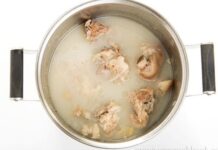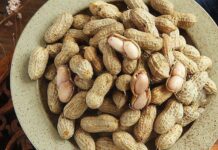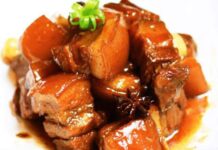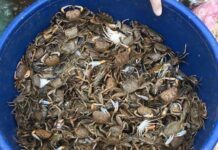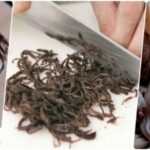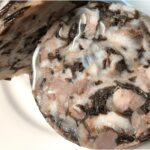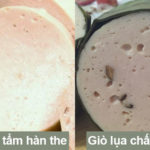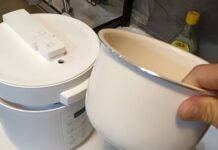Storing Vietnamese Pork Sausage (Giò Lụa)
To properly store Vietnamese pork sausage, use a zip lock bag or plastic wrap to tightly seal the sausage. If you haven’t opened it yet, keep the original packaging intact and store it in the chiller at a temperature of 5 – 8 degrees Celsius.
With this storage method, you can keep partially cut sausage for 1 – 3 days. Intact, packaged sausage can be stored in the chiller for up to 6 days. However, always check the specific storage instructions and expiration date provided by the manufacturer on the packaging.
If you need to use the sausage immediately, you can quickly defrost it by wrapping it in plastic wrap and soaking it in cold water for about an hour. Make sure that no water seeps into the sausage during this process.
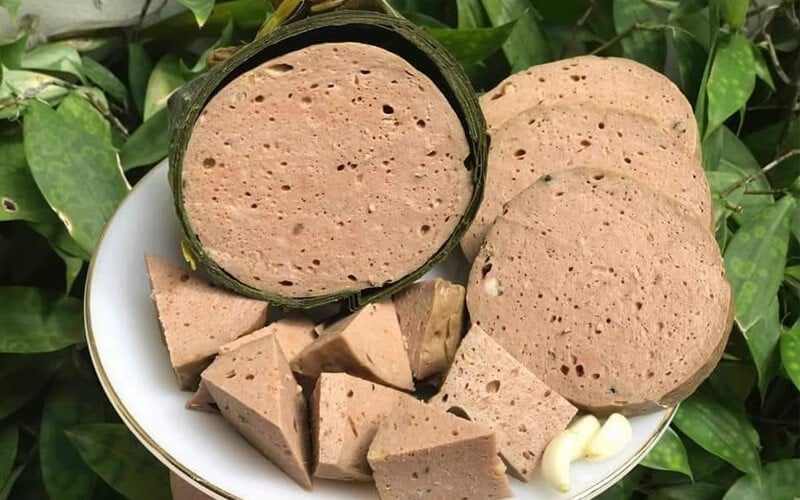
Storing Vietnamese Pork Sausage in the Freezer
The best way to prolong the shelf life of Vietnamese pork sausage is to store it in the freezer, where it can last for up to 10 – 20 days. Similar to storing it in the chiller, make sure to tightly wrap and seal the sausage before placing it in the freezer.
For partially used sausage, place it in a zip lock bag, then put it in an airtight container and store it in the freezer. It can be kept this way for up to 6 days. When using frozen sausage, it is best to defrost it slowly in the chiller compartment of your refrigerator or at room temperature.
If you need to defrost the sausage more quickly, wrap it tightly and soak it in a bowl of cold water for about an hour. Ensure that no water seeps into the sausage as this may affect its flavor.
To further extend the shelf life of the sausage, you can also try boiling it again.
Storing Other Types of Vietnamese Pork Delicacies: Giò Tai (Pork Ear) and Giò Thủ (Head Cheese)
For homemade or store-bought giò thủ – giò xào, it is best to store them in the refrigerator. To maintain their texture and flavor, wrap the delicacies in 2 – 3 layers of banana leaves, then place them in a zip lock bag.
Store giò thủ in the chiller compartment, away from raw foods, and consume it within 5 – 7 days. If you have already cut into the giò thủ and have leftovers, transfer them to an airtight container or a plastic bag, and keep them in the chiller for 2 – 3 days.
Storing Giò Bê (Beef Delicacy) and Giò Me (Preserved Beef)
Intact and unopened giò bê – giò me can be stored in the refrigerator for 7 – 10 days. If the giò bê has been sliced, it should be consumed within 3 – 4 days. To extend the shelf life further, you can store it in the freezer for 10 – 15 days.
Storage Instructions:
For intact and unopened giò bê – giò me, keep the original packaging intact if store-bought, or wrap it tightly in banana leaves followed by an additional layer of plastic wrap, a zip lock bag, or a plastic bag if it’s homemade. Store it in the chiller at a temperature of 0 – 4 degrees Celsius, away from raw foods and strongly scented items.
For pre-sliced giò bê (giò me) leftovers, place them in an airtight container or a sealed plastic bag and store them in the chiller.
It is advisable to purchase only the amount you intend to consume to avoid wastage. Do not keep leftovers for too long, and always follow proper storage instructions. If the sausage or delicacy develops an unusual odor, becomes slimy, or shows signs of mold, discard it immediately. Consuming spoiled meat products can be harmful to your health.
The Ultimate Guide to Making Delicious, Crispy Vietnamese Pork Sausage (Giò Thủ): A Tasty Treat You Can’t Resist!
Crunchy and savory, this pork and pig’s ear terrine is a delightful treat. The dish is a harmonious blend of flavors, with the subtle spice of pepper and the earthy notes of wood ear mushrooms. This mouthwatering delicacy is a perfect companion to a hot bowl of rice and some tangy pickles, offering a refreshing change from the usual festive fare. A true delight for even the most discerning palate.
The Ultimate Guide to Buying Delicious Sausages for Tet: Four Tell-Tale Signs to Spot Quality.
To ensure your Lunar New Year feast is truly special, it’s essential to know how to differentiate between authentic and inferior Vietnamese pork sausage, or “giò lụa.” The ability to discern the presence of borax, a common additive, will empower you to choose only the finest sausage for your festive spread.
The Ultimate Guide to Sausage and Pork Roll Shopping: A Simple Test for Quality Assurance.
To purchase delicious and authentic giò lụa and chả, one needs to possess a certain ‘know-how’. It is essential to be able to discern the pure, traditional delicacies from those that are filled with unwanted additives and fillers. With this knowledge, you can ensure that you are enjoying the very best that Vietnamese cuisine has to offer.
How to Distinguish Between Pure and Contaminated Pork Sausage and Pork Roll
“Unravel the secrets to distinguishing between pure and impure pork delicacies. The tips and tricks we’re about to reveal will empower you to make informed choices for your health without compromising on taste. Prepare to become a master at selecting the finest and safest pork treats as we explore the art of recognizing quality giò chả.”













